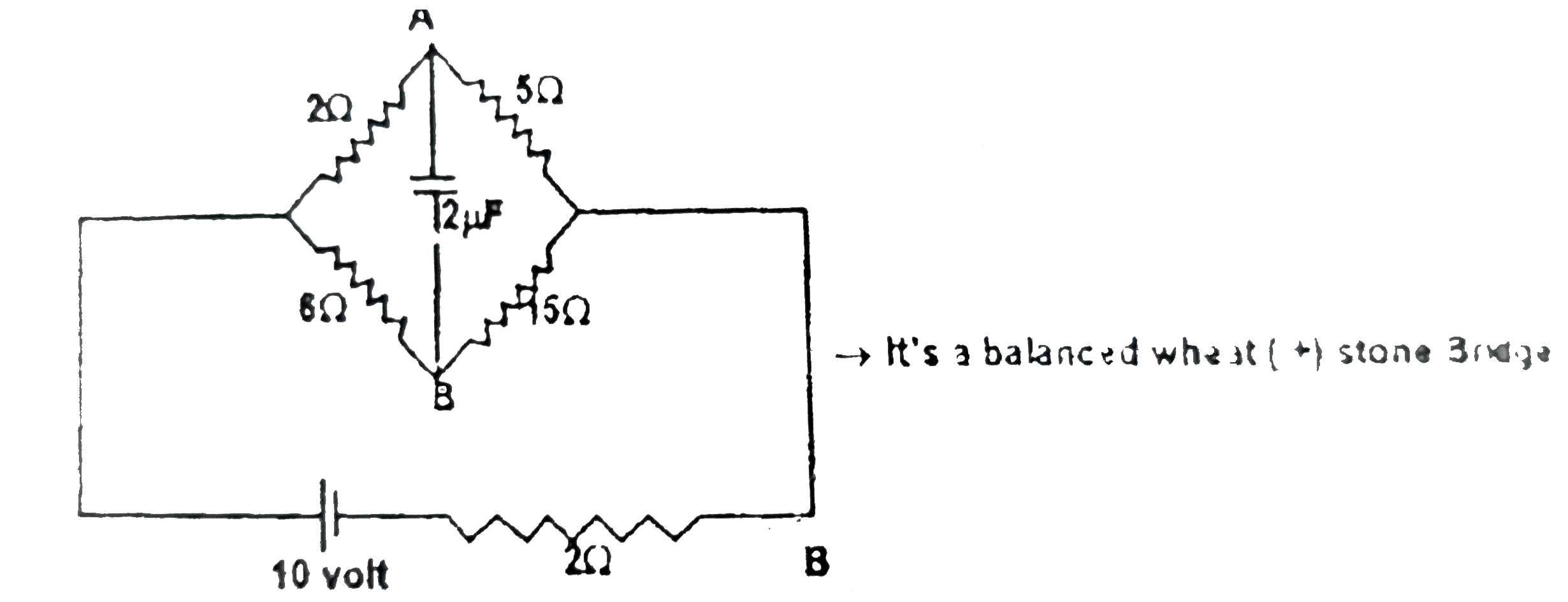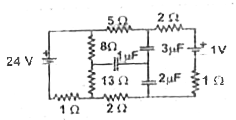VA⋅VB for given figure in steady state is
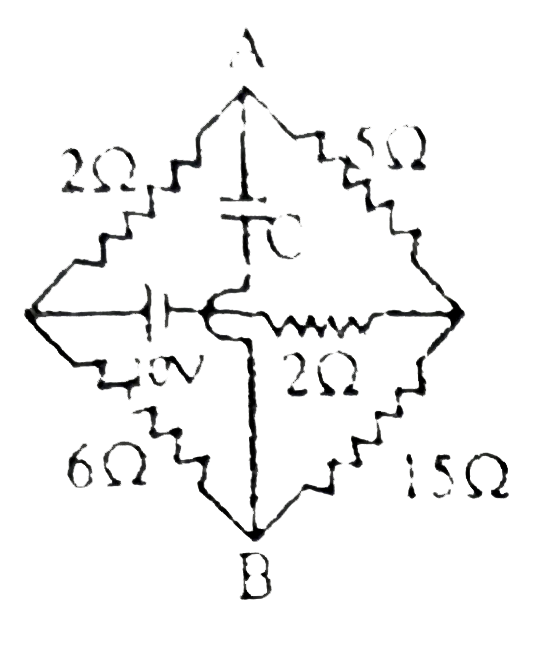
A
4V
B
6V
C
5V
D
zero
Video Solution
Text Solution
The correct Answer is:d
|
Updated on:21/07/2023
Topper's Solved these Questions
- BOOK - FIITJEECHAPTER - GMP ASSESMENTEXERCISE - Assertion & Reason15videos
GMP ASSESMENT
- BOOK - FIITJEECHAPTER - GMP ASSESMENTEXERCISE - Multiple Question58videos
GMP ASSESMENT
- BOOK - FIITJEECHAPTER - GMP ASSESMENTEXERCISE - Numerical Based61videos
GMP ASSESMENT
- BOOK - FIITJEECHAPTER - GENERAL PHYSICSEXERCISE - MATRIX MATCH TYPE3videos
GENERAL PHYSICS
- BOOK - FIITJEECHAPTER - GRAVITATIONEXERCISE - Numerical based Question2videos
GRAVITATION
Similar Questions
Knowledge Check
- Question 1 - Select One
In the given figure the steady state current is
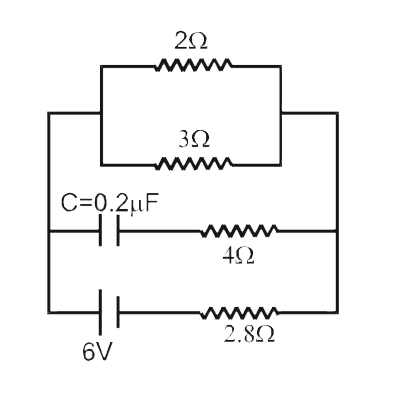 AzeroB0.6AC0.9AD1.5A
AzeroB0.6AC0.9AD1.5A - Question 2 - Select One
Find VA−VB in steady state
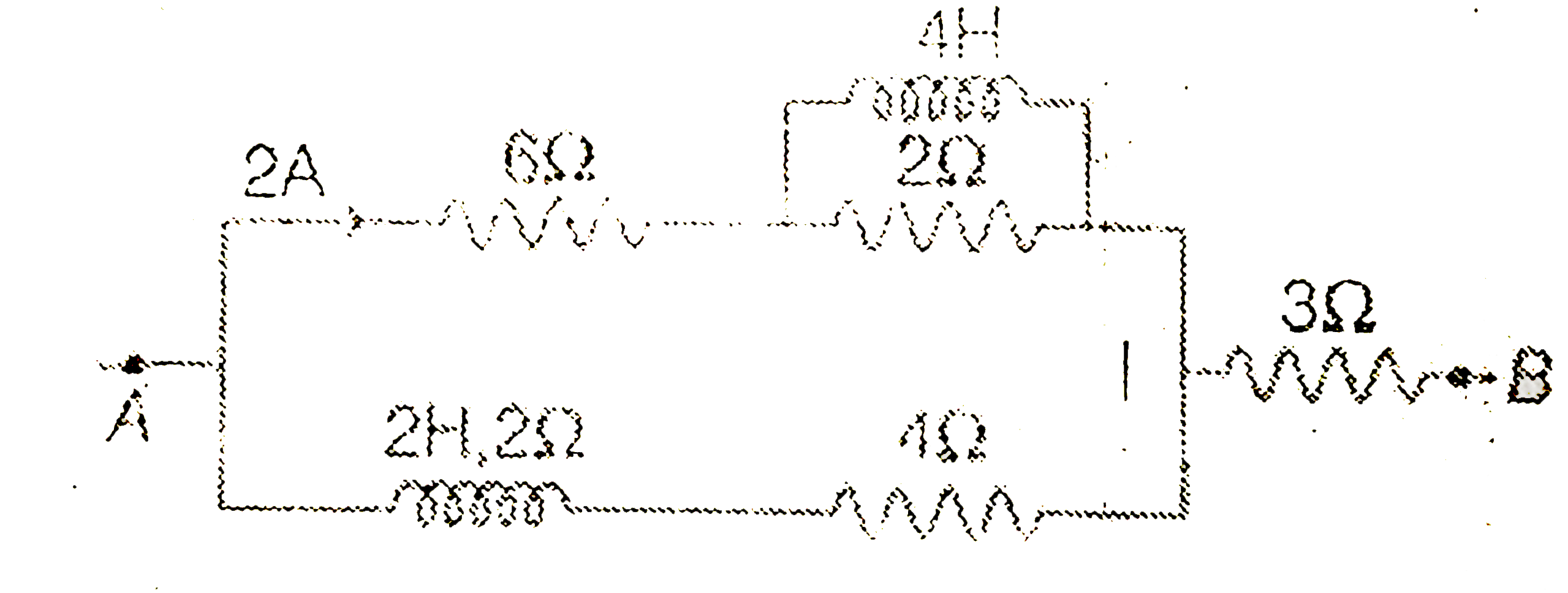 A8VB16VC24VDnone of the above
A8VB16VC24VDnone of the above - Question 3 - Select One or More
Figure shows a network of capacitor and resistances. . 3V Potentials of some of the points are given. The energy (U) stored in the capacitor at steady state and the heat (H) dissipated in 1Ωresistor at steady state are
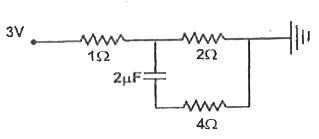 Au=4μJBU=8μJCH=8μJD1J
Au=4μJBU=8μJCH=8μJD1J
The power consumption by the circuit shown in figure at steady state is
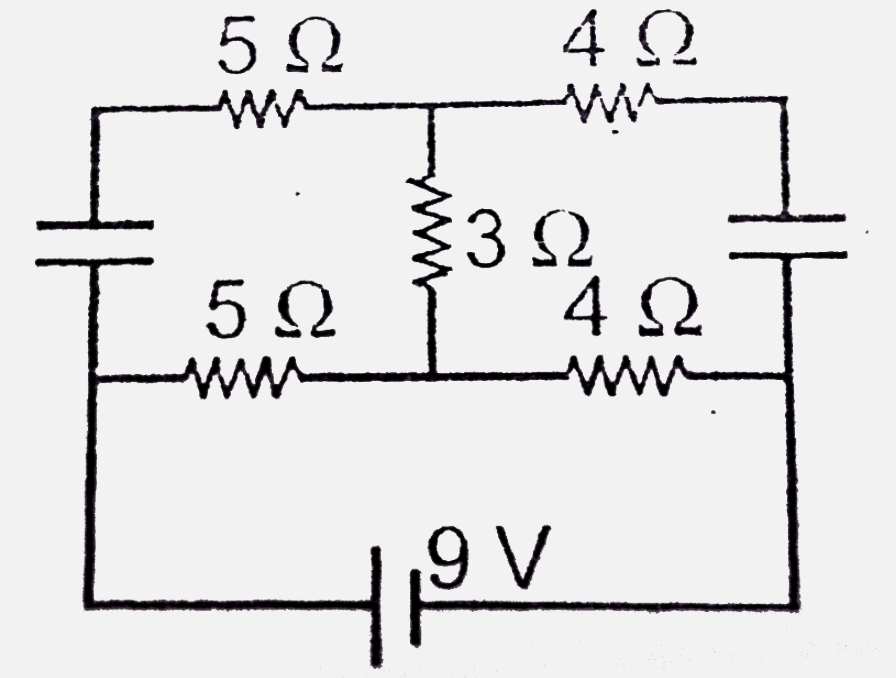 View Solution
View SolutionCalculate the potential difference between the points A and B, and between the points B and C of figure in steady state
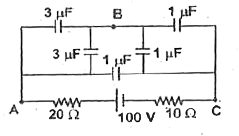 View Solution
View Solutionfind the potential difference between th point A and B and between the point B and C of figure in steady state.
 View Solution
View SolutionFind the potential difference between the points A and B and between the points B ans C of figure in steady state.
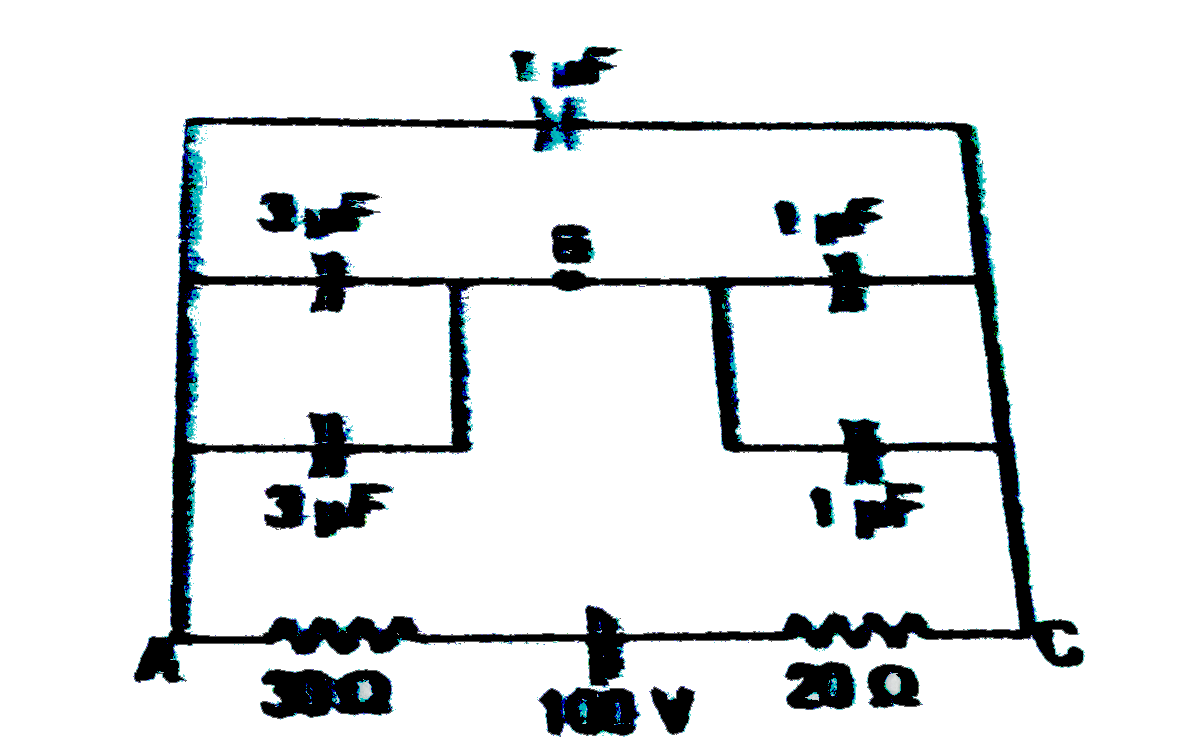 View Solution
View SolutionAs we know in steady state charge on a capacitor is given as Q=CV which also implies C=Q/V. So can we say in steady state capacitance is proportional to the supplied charge Q.
View Solution


